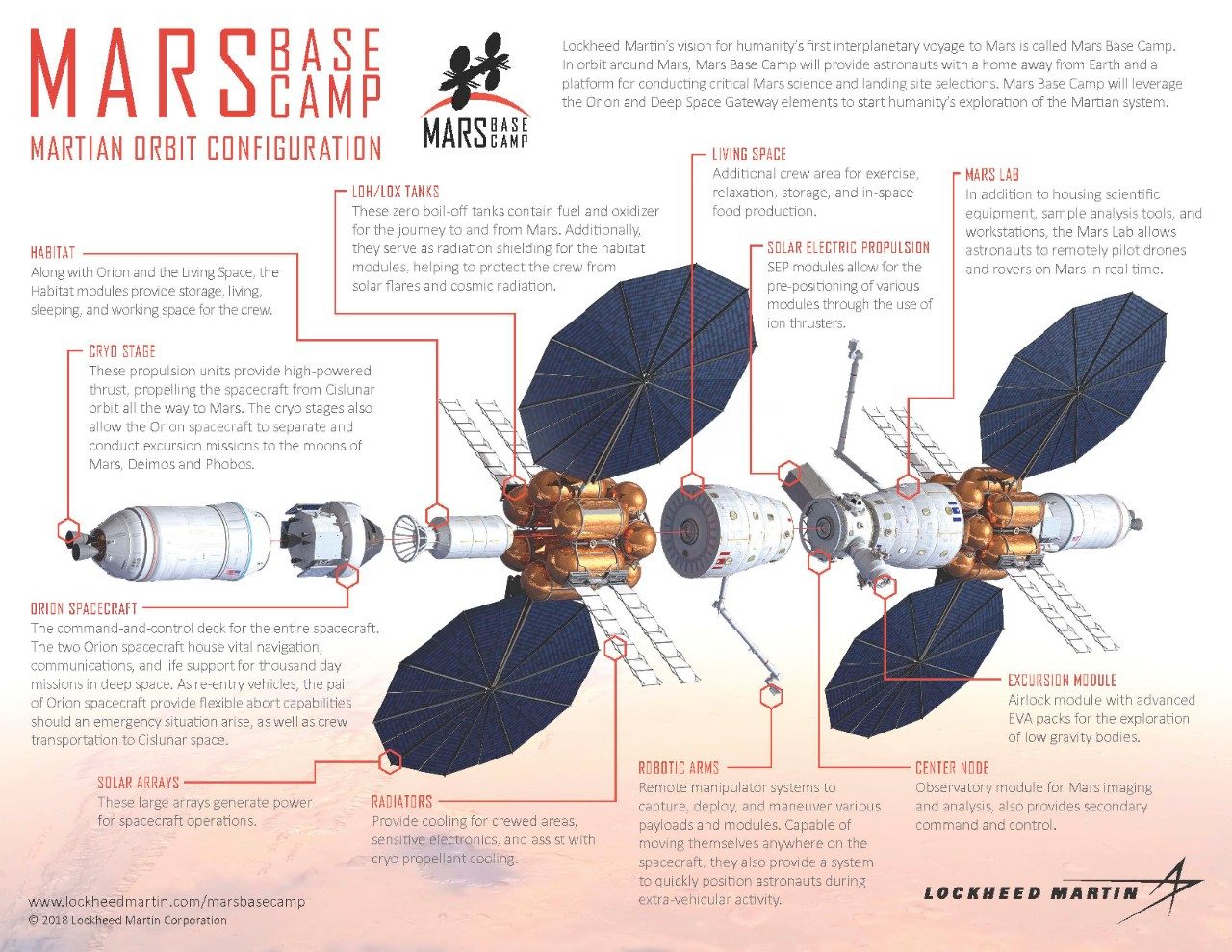The Mars Base Camp concept is built on a strong foundation of today’s technologies – making it safe, affordable and achievable:
What will a human Mars mission look like? How can we keep astronauts safe, healthy and productive for a three-year journey into deep space? What can they discover when they get to Mars? How do we build a road map from today’s low-Earth orbit missions to our first interplanetary journey?
At Lockheed Martin, our job is to challenge ourselves and our industry teammates to drive the innovation that helps make those grand achievements possible - quickly, safely and affordably.
Mars Base Camp is Lockheed Martin’s vision for sending humans to Mars in about a decade. The concept is simple: transport astronauts from Earth, via the Moon, to a Mars-orbiting science laboratory where they can perform real-time scientific exploration, analyze Martian rock and soil samples, and confirm the ideal place to land humans on the surface in the 2030s.
Mars Base Camp lays out a proposed technology road map to support NASA’s journey to Mars. This is a mission designed to be led by NASA and its international and commercial partners.
How does Mars Base Camp work?

Mars Lander
As valuable as orbiting missions are for science and exploration, we’ll eventually look to leave the base camp and descend to the surface.
The Mars Base Camp surface lander concept is a reusable, single-stage lander capable of descending to the surface from Mars orbit using supersonic retropropulsion. Each surface mission could last two weeks with up to four astronauts, and return to the orbiting Mars Base Camp without surface refueling or leaving assets behind.
The lander uses Orion avionics and systems as its command deck and is powered by engines using liquid-hydrogen/liquid-oxygen propellant, both of which will be generated from water.




